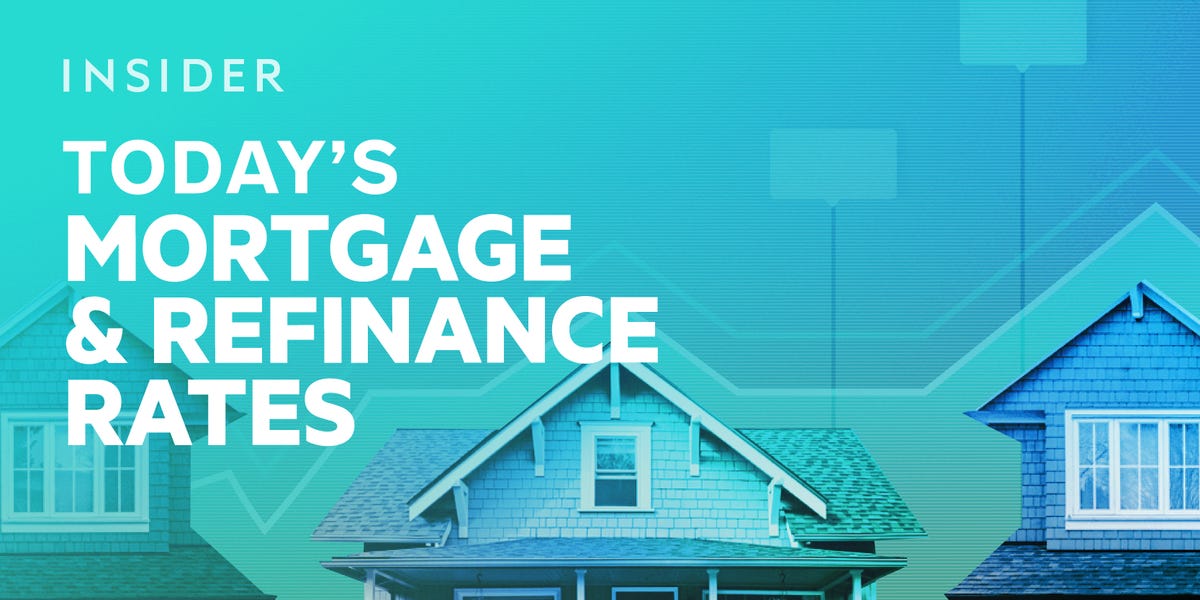Our experts answer readers’ home-buying questions and write unbiased product reviews (here’s how we assess mortgages). In some cases, we receive a commission from our partners; however, our opinions are our own.
Mortgage rates are expected to go down in 2024, but so far this year they’ve been stubbornly elevated.
Average 30-year mortgage rates rose last week and remain a bit higher than last month’s average, according to Zillow data.
Federal Reserve officials have indicated that they may lower the federal funds rate three times this year, which should remove some upward pressure off of mortgage rates and allow them to finally trend down. But we’ll need to see more economic data before we get a clearer picture on when the first rate cut might come.
The Fed wants to be sure that it’s successfully tackled too-high inflation before it starts lowering rates. As inflation continues slowing and the overall economy comes into better balance, officials will likely feel more comfortable cutting rates.
According to the CME FedWatch Tool, the first Fed cut could come in May or June. This means we could see lower mortgage rates by mid-2024 — right around when the majority of homebuyers are entering the market.
If you’re planning to buy a home this year, you may want to wait until a little later in the homebuying season to get started. Those who wait until the early fall should enjoy lower rates than those who buy in the spring.
Mortgage Rates Today
| Mortgage type | Average rate today |
|
|
|
|
|
|
|
|
|
|
|
|
|
|
|
|
|
|
|
|
|
Mortgage Refinance Rates Today
| Mortgage type | Average rate today |
|
|
|
|
|
|
|
|
|
|
|
|
|
|
|
|
|
|
|
|
|
Mortgage Calculator
Use our free mortgage calculator to see how today’s mortgage rates will affect your monthly and long-term payments.
Mortgage Calculator
$1,161
Your estimated monthly payment
- Paying a 25% higher down payment would save you $8,916.08 on interest charges
- Lowering the interest rate by 1% would save you $51,562.03
- Paying an additional $500 each month would reduce the loan length by 146 months
By plugging in different term lengths and interest rates, you’ll see how your monthly payment could change.
Mortgage Rate Projection for 2024
Mortgage rates increased dramatically for most of 2023, though they started trending back down in the final months of the year. As the economy continues to normalize this year, rates should come down even further.
In the last 12 months, the Consumer Price Index rose by 3.4%, a significant slowdown compared to when it peaked at 9.1% in 2022. This is good news for mortgage rates — as inflation slows and the Federal Reserve is able to start cutting the federal funds rate, mortgage rates are expected to trend down as well.
For homeowners looking to leverage their home’s value to cover a big purchase — such as a home renovation — a home equity line of credit (HELOC) may be a good option while we wait for mortgage rates to ease. Check out some of the best HELOC lenders to start your search for the right loan for you.
A HELOC is a line of credit that lets you borrow against the equity in your home. It works similarly to a credit card in that you borrow what you need rather than getting the full amount you’re borrowing in a lump sum. It also lets you tap into the money you have in your home without replacing your entire mortgage, like you’d do with a cash-out refinance.
Current HELOC rates are relatively low compared to other loan options, including credit cards and personal loans.
When Will House Prices Come Down?
We aren’t likely to see home prices drop anytime soon thanks to extremely limited supply. In fact, they’ll likely rise this year as mortgage rates drop.
Fannie Mae researchers expect prices to increase 3.2% in 2024, while the Mortgage Bankers Association expects a 4.1% increase in 2024.
Lower mortgage rates will bring more buyers onto the market, putting upward pressure on prices. But prices aren’t currently expected to increase as much as they have in recent years.
Fixed-Rate vs. Adjustable-Rate Mortgage Pros and Cons
Fixed-rate mortgages lock in your rate for the entire life of your loan. Adjustable-rate mortgages lock in your rate for the first few years, then your rate goes up or down periodically.
So how do you choose between a fixed-rate vs. adjustable-rate mortgage?
ARMs typically start with lower rates than fixed-rate mortgages, but ARM rates can go up once your initial introductory period is over. If you plan on moving or refinancing before the rate adjusts, an ARM could be a good deal. But keep in mind that a change in circumstances could prevent you from doing these things, so it’s a good idea to think about whether your budget could handle a higher monthly payment.
Fixed-rate mortgage are a good choice for borrowers who want stability, since your monthly principal and interest payments won’t change throughout the life of the loan (though your mortgage payment could increase if your taxes or insurance go up).
But in exchange for this stability, you’ll take on a higher rate. This might seem like a bad deal right now, but if rates increase further down the road, you might be glad to have a rate locked in. And if rates trend down, you may be able to refinance to snag a lower rate
How Does an Adjustable-Rate Mortgage Work?
Adjustable-rate mortgages start with an introductory period where your rate will remain fixed for a certain period of time. Once that period is up, it will begin to adjust periodically — typically once per year or once every six months.
How much your rate will change depends on the index that the ARM uses and the margin set by the lender. Lenders choose the index that their ARMs use, and this rate can trend up or down depending on current market conditions.
The margin is the amount of interest a lender charges on top of the index. You should shop around with multiple lenders to see which one offers the lowest margin.
ARMs also come with limits on how much they can change and how high they can go. For example, an ARM might be limited to a 2% increase or decrease every time it adjusts, with a maximum rate of 8%.







